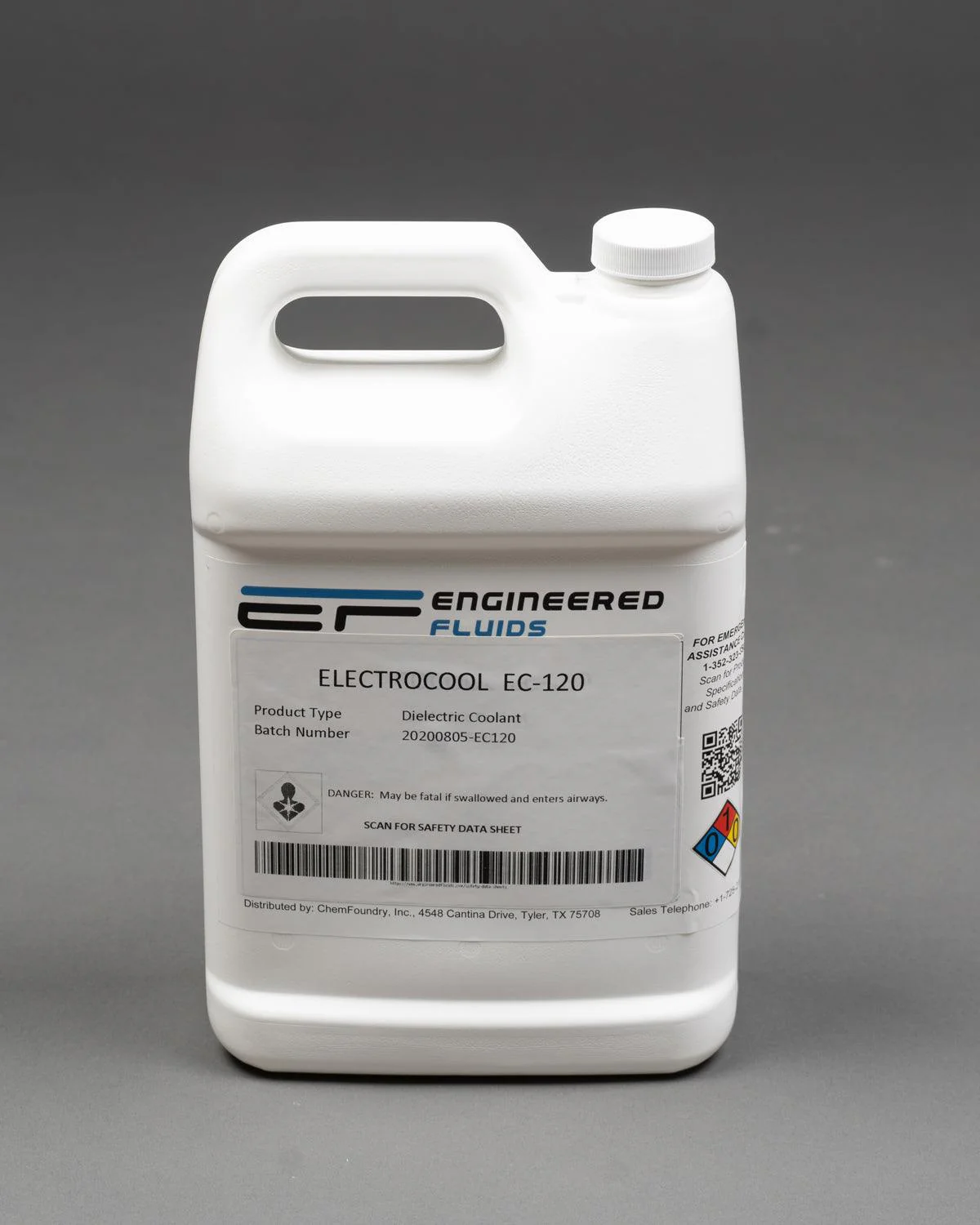Answers

Mar 23, 2020 - 10:50 AM
Engineered Fluids Dielectric Coolants are highly resistant to oxidation due to heat and aging and contamination which results from use in open tanks.
We recommends that your coolants be tested annually to ensure they remain within an acceptable operating range for electrical, physical and chemical properties. Testing can be performed by a local lab or by Engineered Fluids.
Recommended testing includes:
Moisture analysis (Test Method: ASTM D1533b)
Dielectric Strength (Test Method: ASTM D1816)
Dissipation Factor (Test Method ASTM D924)
Engineered Fluids can assist you with these tests and interpretation of their results. To request testing, please contact Engineered Fluids and we'll instruct you on how to prepare and ship the (500ml) coolant samples for analysis.
It is important when preparing the sample that outside sources of contamination be avoided from the container. The sample bottle must be made of borosilicate glass and the cap of Polypropylene lined with PTFE (Teflon). These are readily available sample bottles an example can be found here. When removing the sample do not use a funnel, submerge the bottle in your tank using gloves or a bottle holder to avoid the heated coolant. The bottle should have a minimum of 25mm of air left in the top allow the sample to cool to room temperature before closing. Seal the bottle cap with electrical tape to prevent losening in transport.
if you have multiple systems where the Dielectric Coolant does not mix between the systems then a sample would be required for each individual system. is needed.
We recommends that your coolants be tested annually to ensure they remain within an acceptable operating range for electrical, physical and chemical properties. Testing can be performed by a local lab or by Engineered Fluids.
Recommended testing includes:
Moisture analysis (Test Method: ASTM D1533b)
Dielectric Strength (Test Method: ASTM D1816)
Dissipation Factor (Test Method ASTM D924)
Engineered Fluids can assist you with these tests and interpretation of their results. To request testing, please contact Engineered Fluids and we'll instruct you on how to prepare and ship the (500ml) coolant samples for analysis.
It is important when preparing the sample that outside sources of contamination be avoided from the container. The sample bottle must be made of borosilicate glass and the cap of Polypropylene lined with PTFE (Teflon). These are readily available sample bottles an example can be found here. When removing the sample do not use a funnel, submerge the bottle in your tank using gloves or a bottle holder to avoid the heated coolant. The bottle should have a minimum of 25mm of air left in the top allow the sample to cool to room temperature before closing. Seal the bottle cap with electrical tape to prevent losening in transport.
if you have multiple systems where the Dielectric Coolant does not mix between the systems then a sample would be required for each individual system. is needed.

Nov 13, 2021 - 09:51 AM
Engineered Fluids can reprocess and renew any of our Dielectric Coolants whose characteristics fall outside our recommendations for continued use. Contact Engineered Fluids for more information on our Coolant Renewal Program.

Dec 13, 2021 - 02:04 PM
We recommend that you test for "Dielectric Strength" (ASTM Standard Test Procedure D1816) instead of conductivity, as this test gives a better picture of the fluid's health. It's not necessary to test and monitor the health of the fluid in real time; we recommend that you test it on an annual basis or if there's been a catastrophic event (something burns up under the surface of the coolant, etc.). If your Coolant is found not to be suitable for continued use, we can help you with disposal or reprocessing.





Add New Comment